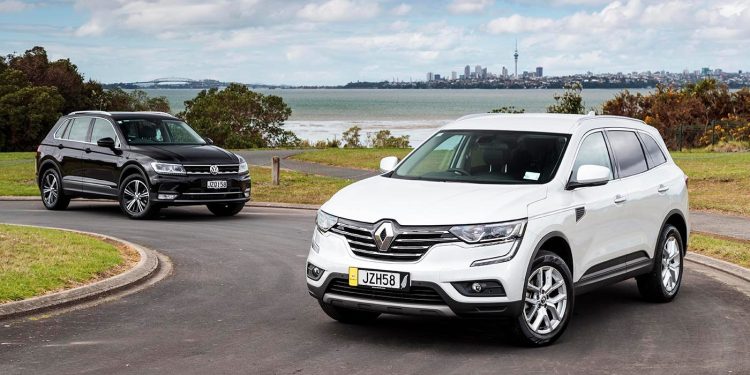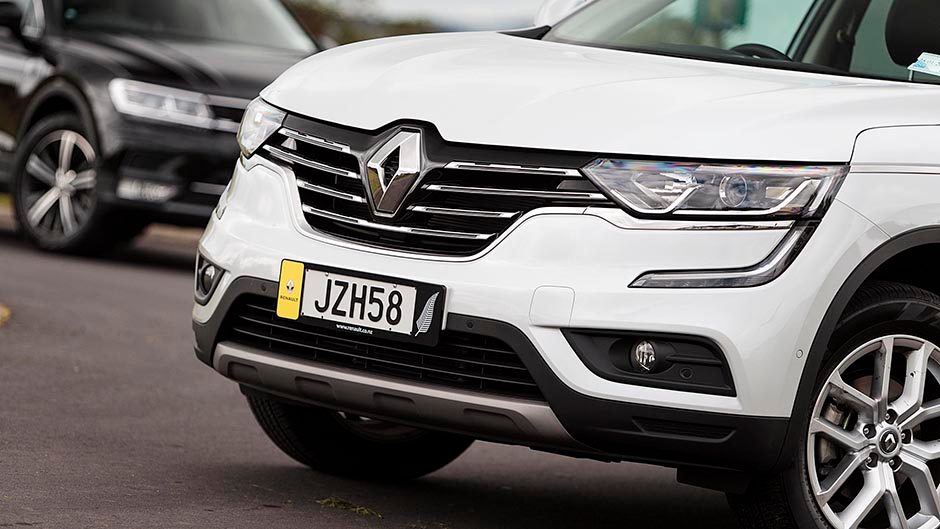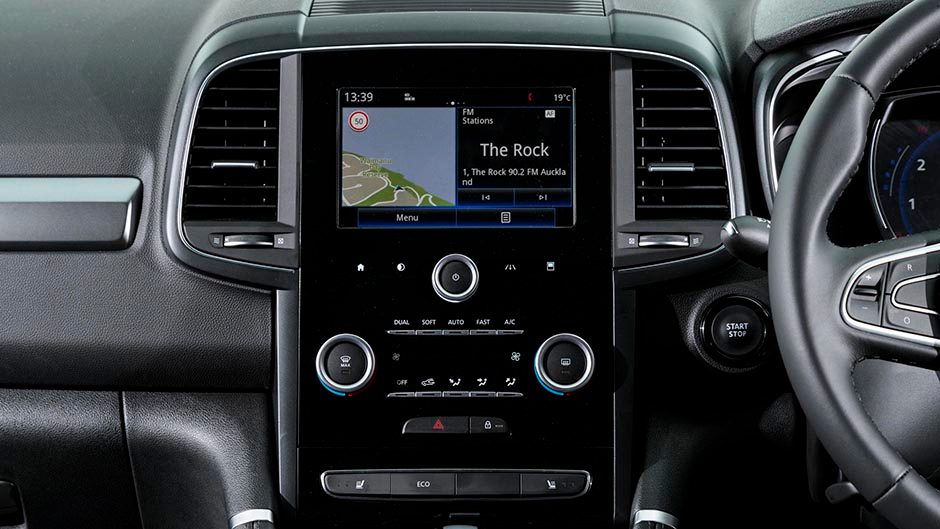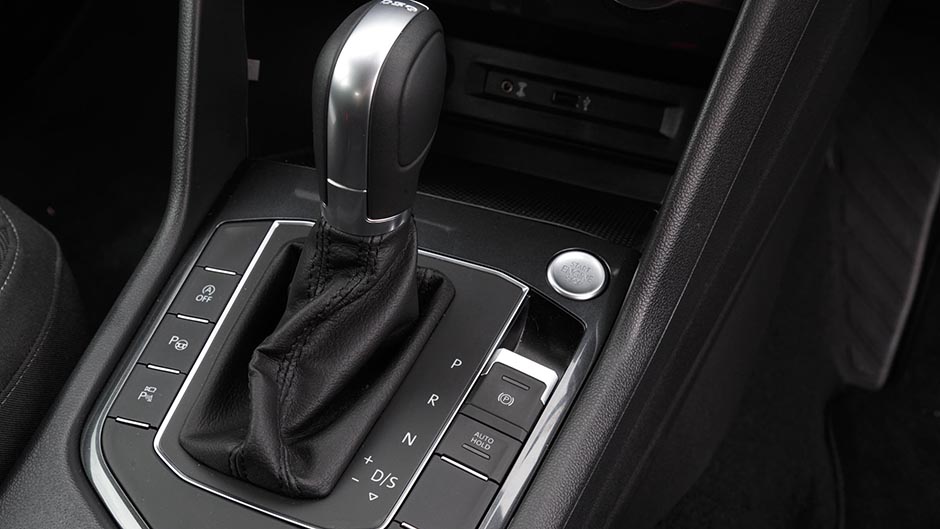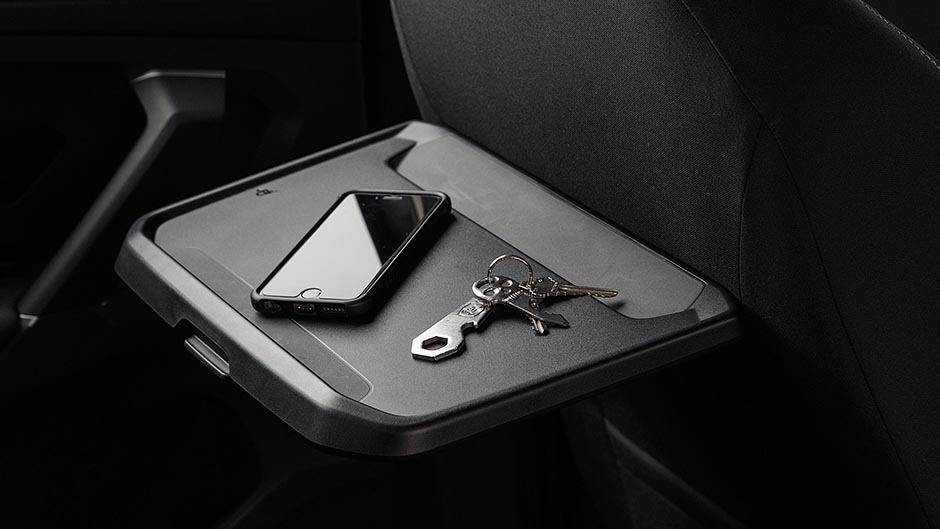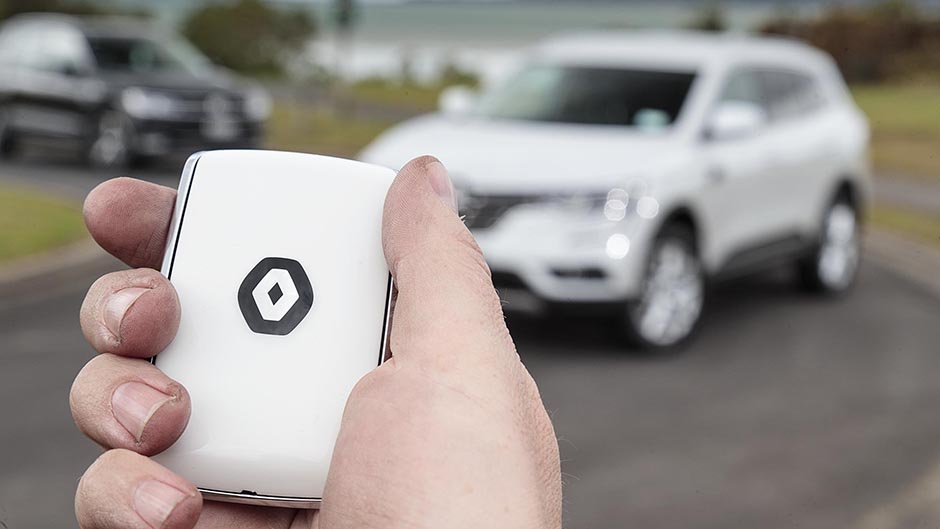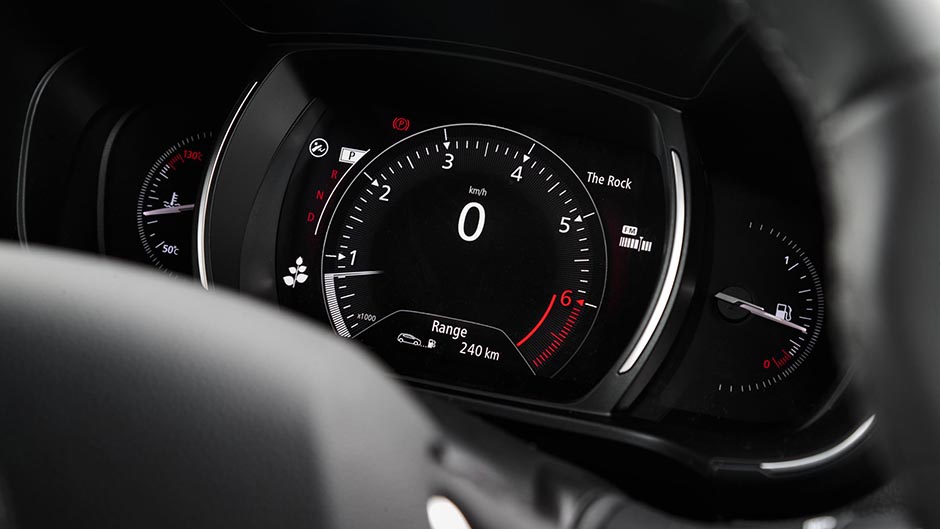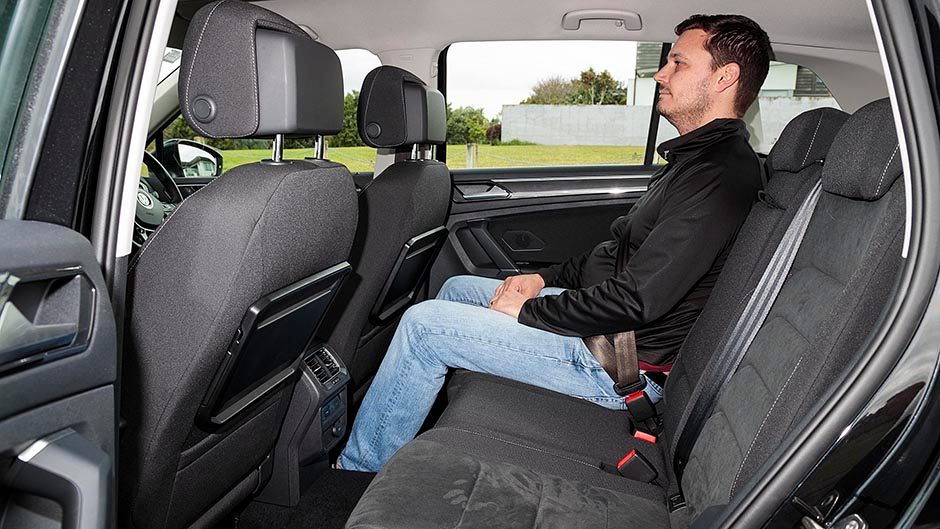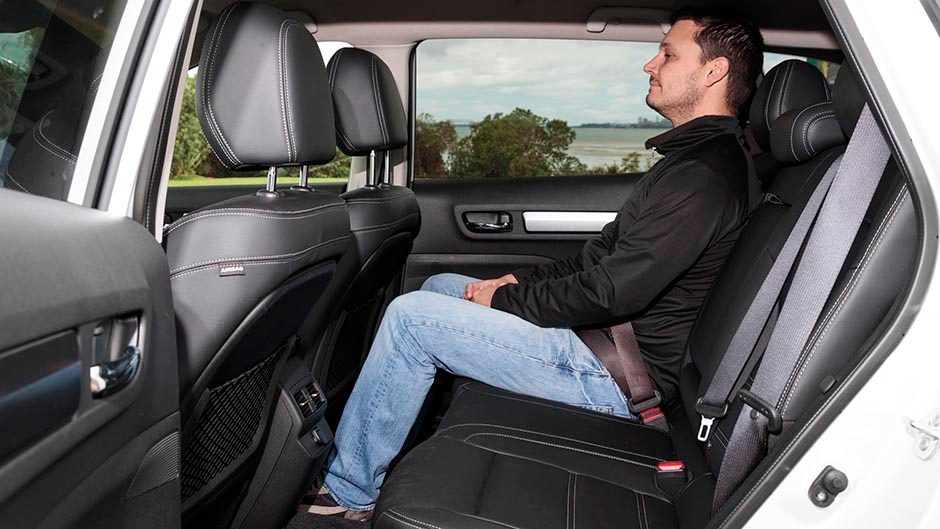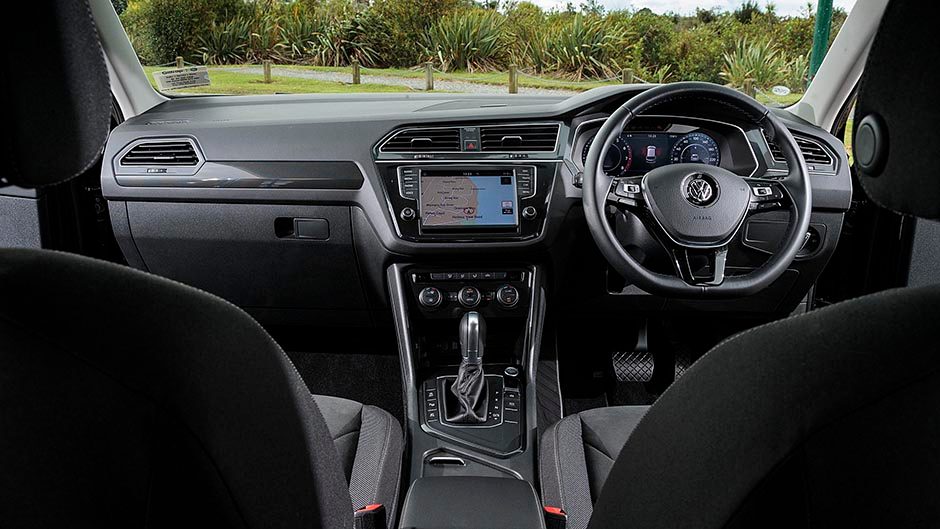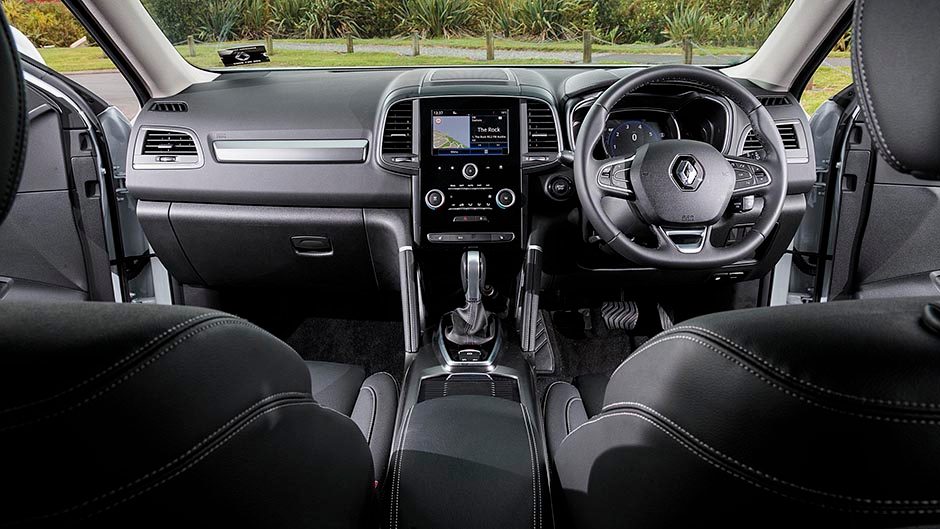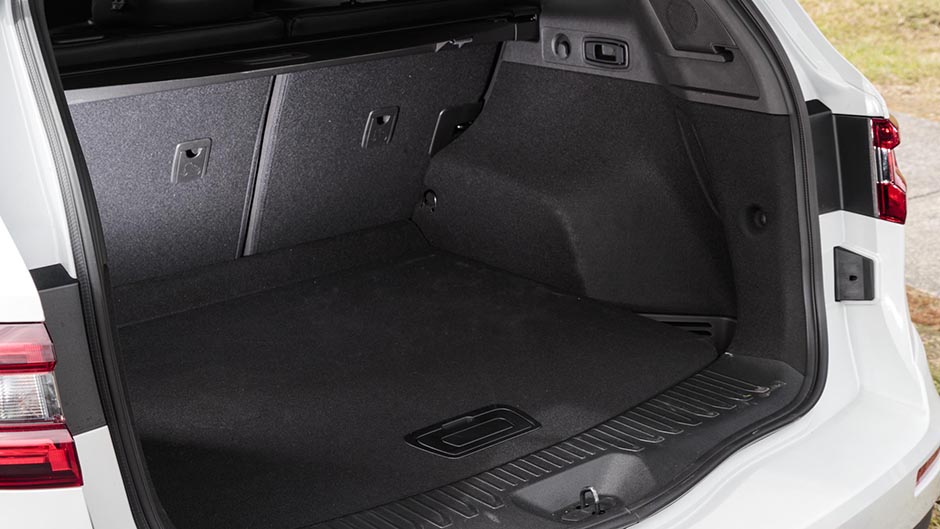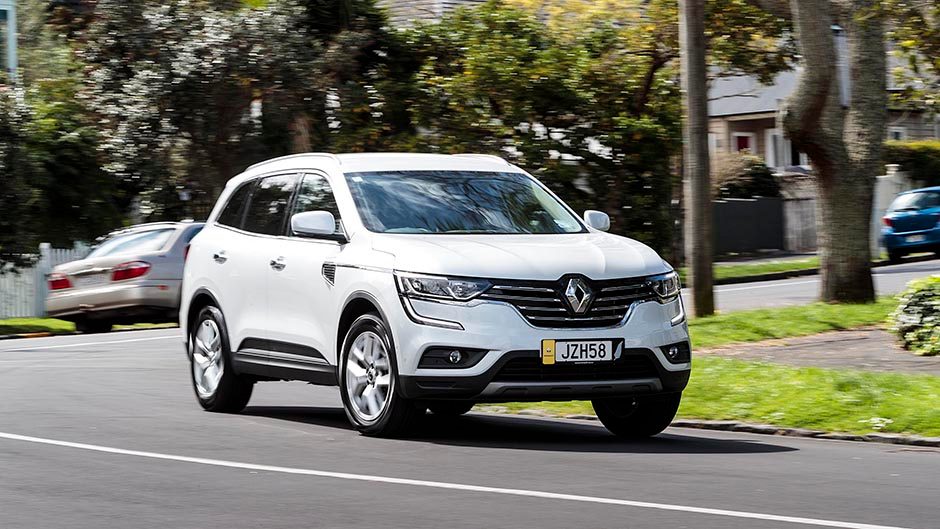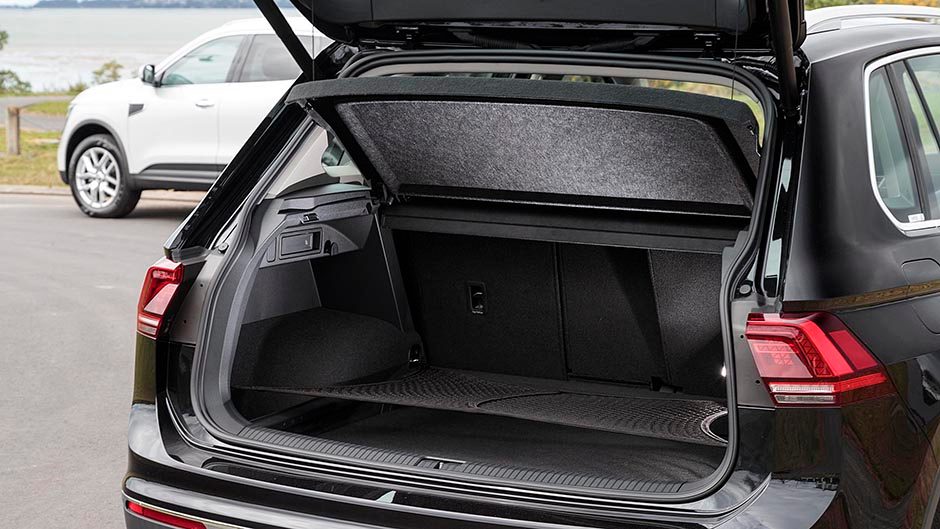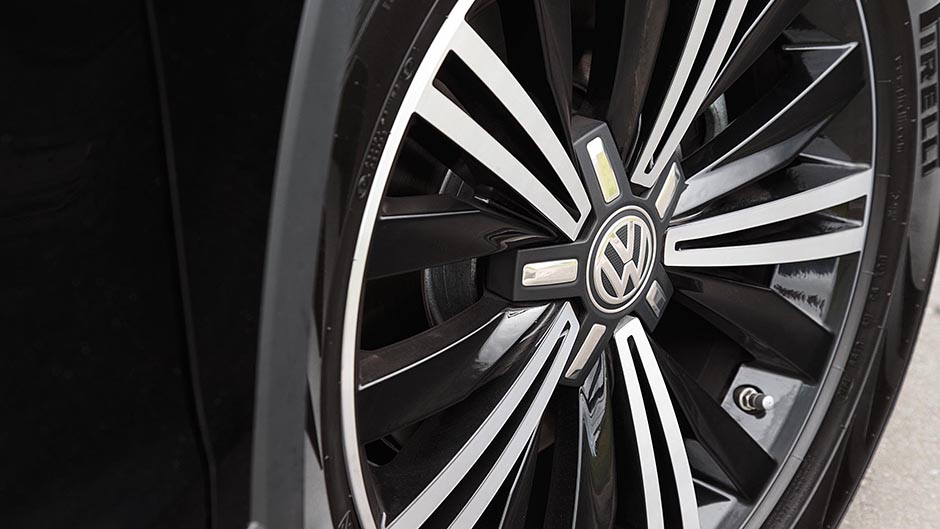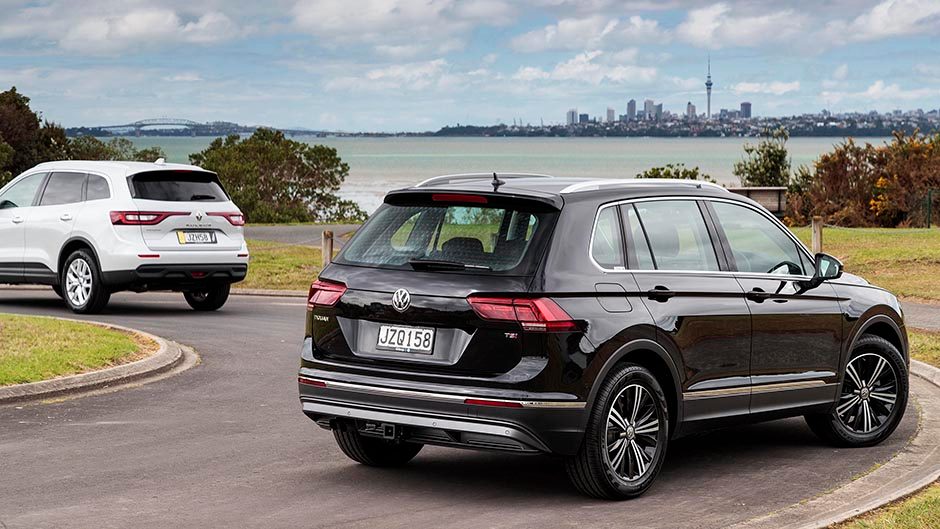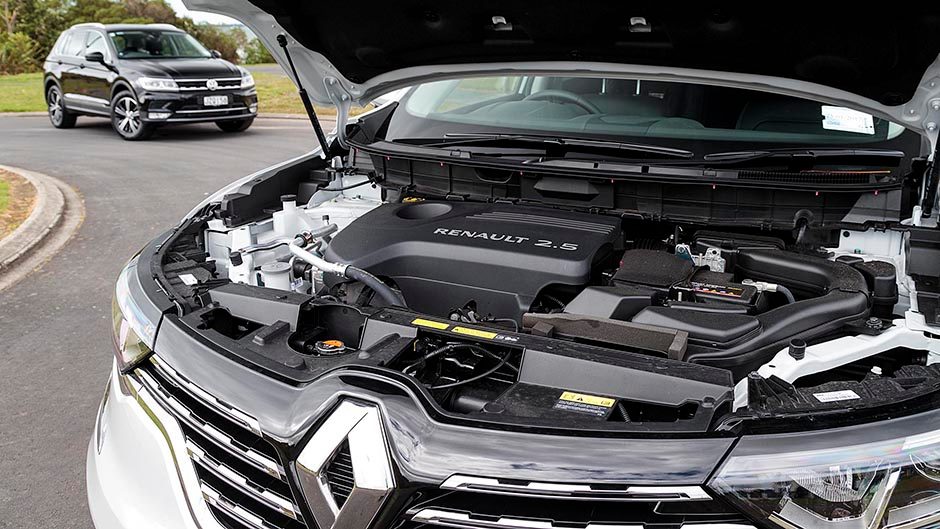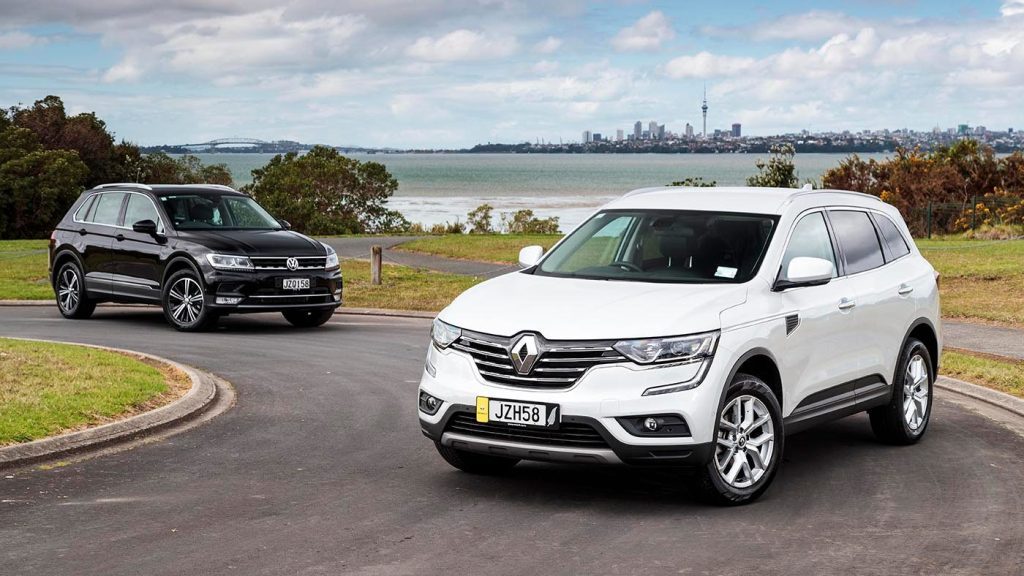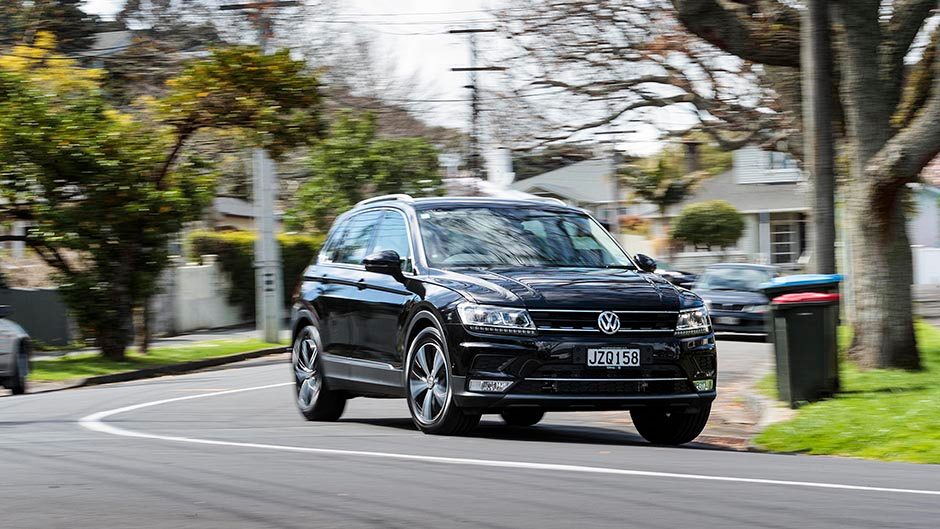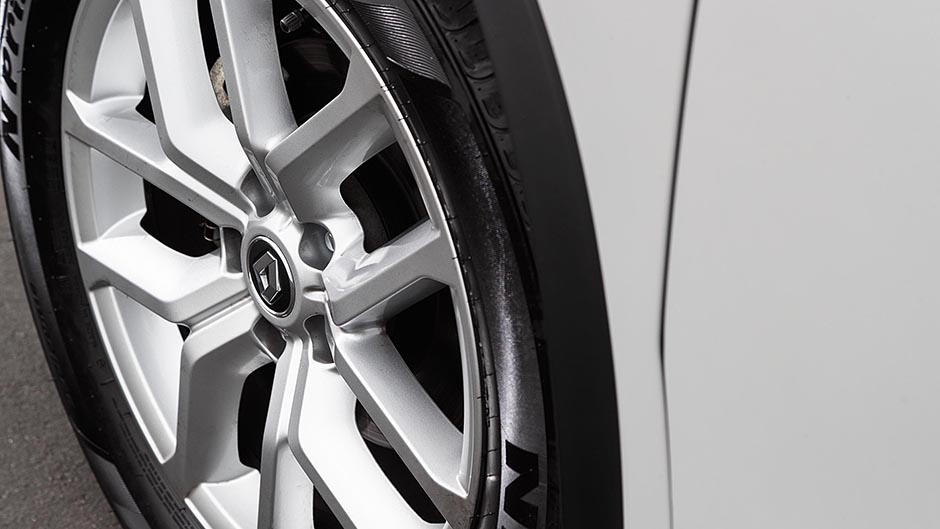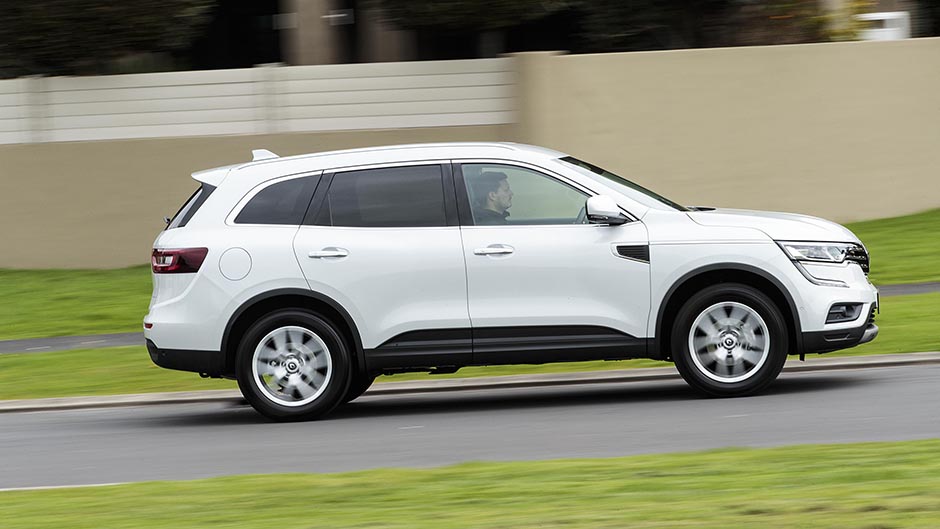2016 Volkswagen Tiguan TSI vs Renault Koleos comparison
Words: Kyle Cassidy | Photos: Tom Gasnier
Another month, another new sport utility to check out. Renault’s latest, the Koleos ii, lands in a hotly contested SUV space and we throw it into the fire by comparing it with the new VW Tiguan
Renault might be firing in Europe, where its market share is strong, but locally the French brand is a battler. It has registered just 122 vehicles this year, Captur by far the most popular model, accounting for well over half of those. So the addition of another SUV, one with competitive credentials, will be cause enough to break out the stinky cheese and champers for the local distributor, which will now have the chance to put some runs on the board.
Koleos II kicks off at $44,990 for the 4×2 Zen model featured, while a 4×4 version is $49,990 and the top spec 4×4 Intens is $54,990. On price it is at least within cooey of the mainstream combatants and it comes with a competitive fit-out too.
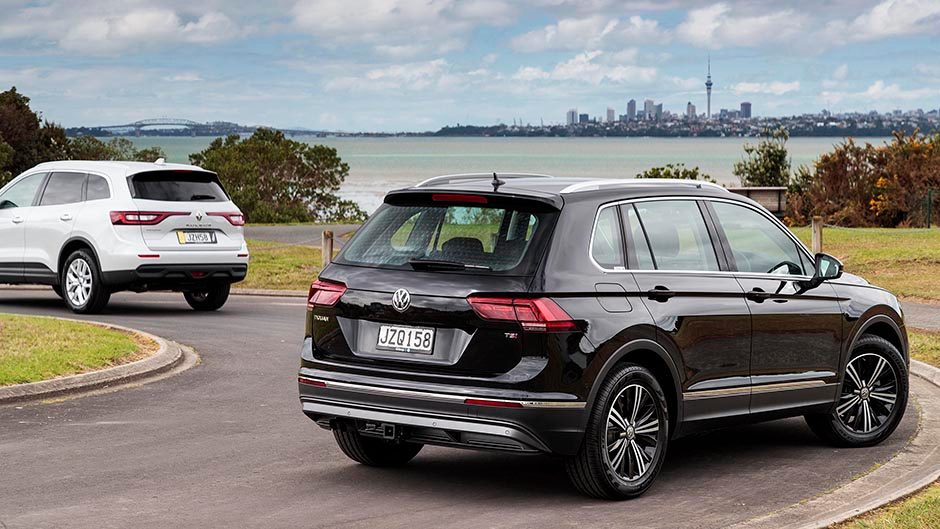
Koleos springs from the Renault-Nissan Alliance CMF-C/D architecture, which means it’s a Nissan X-Trail underneath, and it’s built in Korea by Samsung Motors, another Alliance partner. This helps Renault add features and keep prices in check.
So it’s mechanically similar to the Nissan with a 2.5-litre petrol running through a CVT to the front wheels alone here, while the 4×4 models use the variable mode 4×4 system switching from front- to all-wheel drive on demand, with a lock mode for permanent AWD as well.
The styling and interior are Renault specific. While the overall shape is familiar the front and rear ends are sufficiently different to mark it out as something unique. Another newbie is the VW Tiguan, which we included here for comparison purposes, as it’s the Euro SUV everyone is lining up for. The model in question is one of the front-drive varieties, a 2WD Highline. The Tiguan range starts at $41,990 for the Comfortline and this better specified Highline is $47,990, while AWD models range from $58k right up to $67k.
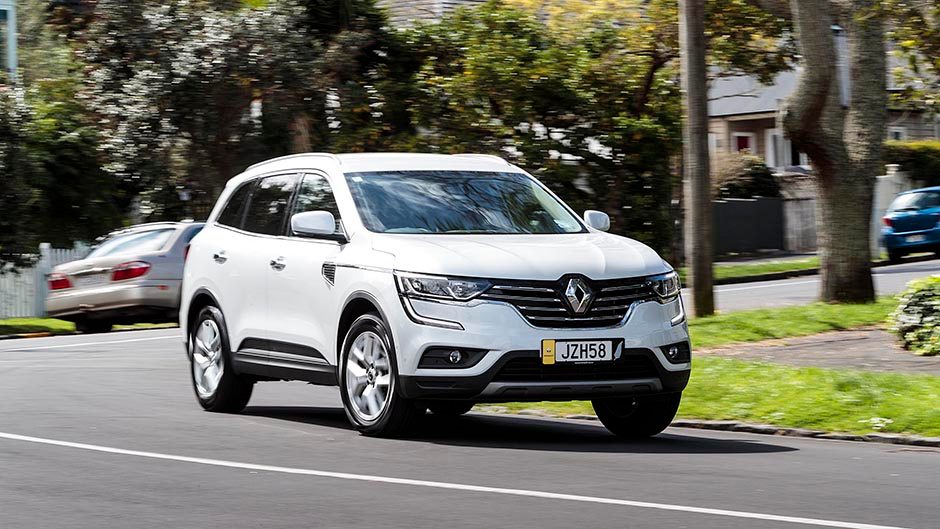
What’s on offer?
Euro models used to arrive here with fairly sparse specification sheets but are now much better stocked to compete with the loaded offerings from the Asian makers. Even this base model Koleos comes with a smart key, front and rear sensors, a reverse camera, dual-zone climate control, heated front seats, faux-leather, electric driver’s seat adjust, tints, sat nav, 18s and a safety pack. The latter comprises city autonomous braking and blind spot monitoring to go with the usual air bag tally and ESP.
The Tiguan offers much the same minus the seat adjustment, heaters and tints but adds a driver’s knee bag, and a few more active safety features, with active lane keeping (adaptive cruise is $1000 extra but not offered on the Koleos), LED lights with auto high beams, a self-parking function, three-zone air, an electric tailgate, a suede-like microfibre upholstery and surround view camera. There are more options on offer for the VW, one of which is scheduled servicing (three-year, 45,000km) for $1200, while you can add a big sunroof to the Koleos.
Under-bonnet differences
The front drive Tiguan uses a 1.4-litre turbopetrol, which gives up more than a litre of capacity to the Koleos, its 2.5-litre four utterly conventional by comparison, still featuring good old port injection for instance. VW’s new generation 1.4 features cylinder deactivation and an exhaust manifold integrated into the head. Turbo response is improved with a small single scroll unit and an intercooler that’s situated inside the induction housing, right up close to the intakes. Officially it’s rated at 6.0L/100km on average, which would require a concentrated effort to replicate, relying on the low end torque and resisting revs above 3000rpm, from which point it starts to drink. The Koleos is rated at 8.1L/100km, and that’s attainable given the 2.5’s low-end pull and its CVT mate. Of note, however, the long term average for the Tiguan over 1600km was sitting at 10.1L/100km, not much better than the 10.9 figure of the Koleos.
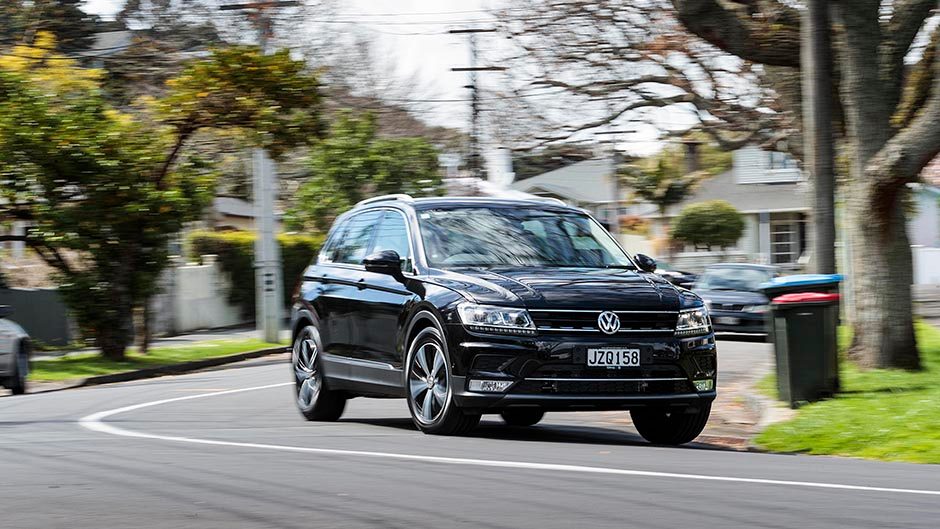
Performance adequate
The Koleos matched its performance claim, ticking off 100km/h in 9.5sec, while the Tiguan was just over half a second adrift of its quoted mark at 10sec. In general running there’s not much between them, though the turbo gets the torque cranking earlier, and it’s noticeably more hushed in operation. The take-off can be abrupt in the Koleos but then the CVT gets to smoothing progress out, and can settle the engine to just 1200rpm at 50km/h, and not much more at 100km/h, such is the flexible nature of its CVT. The engine needs a good prod along past 3500rpm for best urge and the CVT performs its gear changing impression as engine speeds max out to eliminate any raucous whining. The Tiguan has a decent serve of torque below 3000rpm for most duties but a quick overtake requires a downshift or two to access the power, revving away quickly from 3500rpm to about 5500 when it’s pretty much puffed. It’s top gear gait isn’t as relaxed as that of the Koleos but it still cruises quietly at 100km/h with 2000rpm on the clock. This is about the only time it operates in two-cylinder mode, the switch undetectable save for the message on the display.
On the go
Town and around the Koleos’s CVT is smooth, adding a touch of refinement to the gruff engine, but it can suffer those usual CVT foibles in extra-urban running; it’s response not as crisp and not quite matching the input from the throttle. The remedy is to gas it early in anticipation of the delay and just get on with it. But a well sorted twin-clutch is a better experience and a quick flick on the VW’s gearlever activates the Sport mode which is not too racy for the road and is good enough to render the paddle shifters redundant. The DSG’s shifts are quick yet smooth while its creep function is improved and we found it easier to hill start as well without the unnerving roll back of the old model.
Both ride on fixed rate springs, the Tiguan doing so better and it’s quieter over the bumps, the rear end diffusing them well while you can experience the odd thump from the rear of the Renault. Koleos holds on pretty well but there are a few body movements you’d rather they had sorted, and so the steering is not as sharp as it could be. The Tiguan has better body control and turns in more directly, and while cornering antics end in predictable understeer in both machines, Tiguan tends to hold out longer. Both have their squeally wheel moments but the VW electronics are better at sorting traction and minimising torque steer. The Tiguan 2WD misses out on the quick progressive steering of the AWD models and its noticable more in the city where the wheel requires more effort.
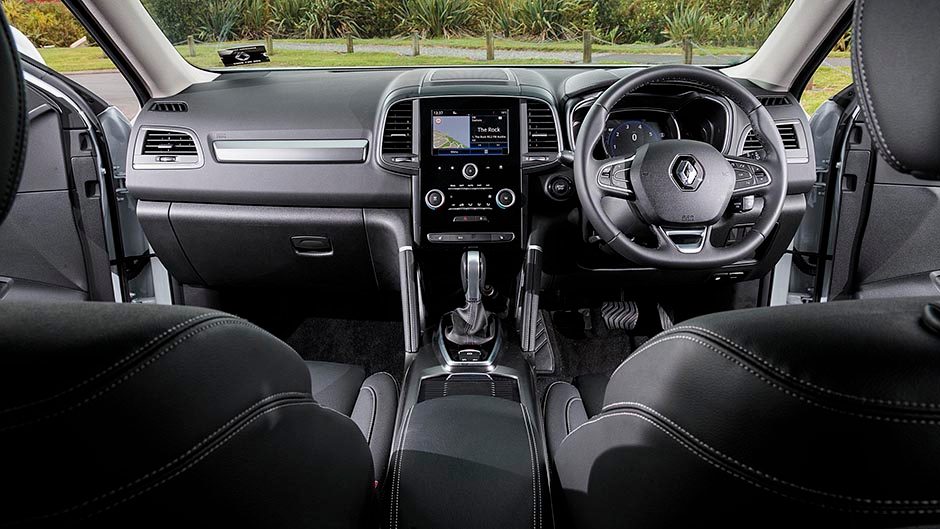
Suitable accommodations
The Koleos surprises inside; it’s a good look yet functional and its infotainment interface is easy to navigate. French systems are seldom intuitive but this one is simple enough to master, the screen responsive to those swipe and pinch type gestures with a clear resolution and it fires into action quickly on start up. The cabin surfaces are nice to the touch, even the fake leather (the seat comfort and support are sound too) and there’s some useful storage in the cabin, not always a given in French cars. Bless those Alliance roots we say, even if you can recognise a few of the switches and levers from the X-Trail.
While the Koleos looks quite novel, it doesn’t have the same substance as the VW; the Tiguan is well presented in a fashion typical of the brand with high quality plastics, everything lined and finished appropriately, and the controls utterly logical. We liked the suede-esque trim and even if you do have to manually adjust the driver’s seat, pfff, it provides a better range of positions. Both seats are set quite high, but SUV owners appreciate that. The Renault is a little roomier in the rear, and has generous door openings, though Tiguan passengers will hardly feel the squeeze.
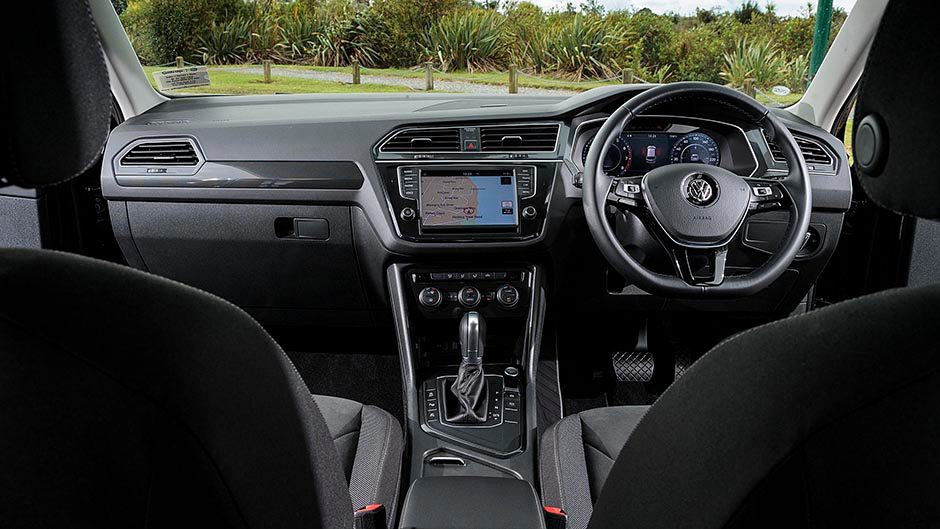
In the luggage bay, the Koleos is a smidge longer and wider, though has a high-set floor with a full-size spare underneath. Renault features 40/60 split folding seat, the VW with a 40/20/40 arrangement and both fold via remote levers. The Tiguan has a flatter load area, and it has variable boot floor for added room with a space saver underneath. The Renault has a 2000kg braked tow rating, 200kg more than the Tiguan’s.
Which to choose?
While the Koleos is the best thing Renault NZ has had in its line-up for a long while, we’d pay the extra for the Tiguan. Its refinement and quality are a step above, its ride and handling are superior and it offers sufficient space inside too.
| Model | VW Tiguan TSI Highline 2WD | Price | $47,990 |
| Engine | 1395cc, IL4, T/DI, 110kW/250Nm | Drivetrain | 6-speed twin-clutch, front-wheel drive |
| Fuel Use | 6.1L/100km | C02 Output | 138g/km |
| 0-100km/h | 10.51sec | Weight | 1423kg (claimed) |
| Model | Renault Koleos Zen 4×2 | Price | $44,990 |
| Engine | 2488cc, IL4, EFI, 126kW/226Nm | Drivetrain | CVT, front-wheel drive |
| Fuel Use | 8.1L/100km | C02 Output | 188g/km |
| 0-100km/h | 9.42sec | Weight | 1581kg |


